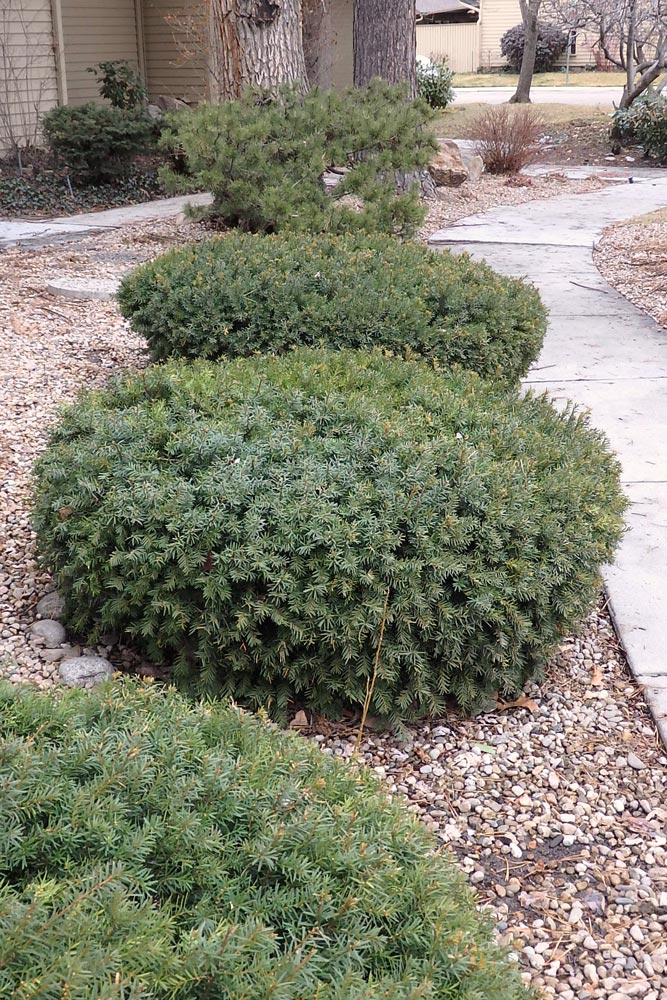It was a tough winter for big game as deep snow pushed them to low elevations in search of food. That search was fatal to many animals after eating a toxic plant that is common for ornamental landscaping.
Japanese yew is an evergreen suitable for much of Idaho’s climate, which makes it attractive for landscaping. Unfortunately, it’s also deadly. At least 30 elk, 50 pronghorns, two moose, and numerous deer died this winter after eating yew, and they weren’t isolate cases. Deaths occurred across the state, including in Boise, Ammon, Payette, North Fork, Challis, Elk Bend, Malad and Preston.

Because of these wildlife deaths, Idaho Fish and Game officials are asking homeowners, landscapers, developers and nurseries to choose alternatives to Japanese yew, or other types of yew (Taxus), when they’re planting this spring, especially in places where yew might be consumed by wildlife.
According to Lynn Kinter, Fish and Game's lead botanist, “Poisonous foliage and seeds are found on all types of ornamental yew, even those called Irish yew, English yew, Chinese yew, spreader yew, or other names.”

F&G officials also ask homeowners to inventory their existing landscaping plants and replace yew if it is on their property.
“I know it’s a hassle to remove shrubs after they’re established, but doing so can save wildlife, as well as domestic animals like rabbits and horses,” Kinter said. “Elk can die from eating only a few mouthfuls of yew leaves. Dogs can die simply by chewing on the pruned branches.”

Because the dried branches and dead shrubs are also toxic, they should be disposed of in a covered landfill, she said.
Kinter notes that the toxic nature of yew is well-known throughout history. In Julius Caesar’s book on the Gallic Wars in 55 B.C., he refers to a king who committed suicide by drinking “juice” from the yew tree.
If homeowners are unsure about identification of shrubs on their property, they can take cuttings to garden centers, or to Master Gardeners at University of Idaho county extension offices.
Idaho Fish and Game suggests a list of alternative landscaping plants that are suitable replacements for yew, including evergreens, natives and non-natives.
Idaho native evergreens that are non-toxic and can tolerate some shade:
- Western swordfern (Polystichum munitum)
- Oregon boxleaf (Pachystima myrsinites)
- Curl-leaf mountain mahogany (Cercocarpus ledifolius)
- Russet buffaloberry (Shepherdia canadensis)
- Oakleaf sumac (Rhus trilobata)
- Oregon grape-holly (Berberis aquifolium, Mahonia aquifolium)
Idaho native shrubs that tolerate some shade, but are not evergreen:
- Syringa (Philadelphus lewisii)
- Woods rose (Rosa woodsii)
- Thimbleberry (Rubus parviflorus)
- Oceanspray (Holodiscus discolor)
- Mallow ninebark (Physocarpus malvaceus)
- Rocky mountain maple (Acer glabrum)
- Golden currant (Ribes aureum)
- Red flowering currant (Ribes sanguineum)
- Common snowberry (Symphoricarpus albus)
- Red-twig dogwood (Cornus sericea)
- Highbush cranberry/mooseberry (Viburnum edule)
- Serviceberry (Amelanchier alnifolia, A. utahensis)
- Twinberry honeysuckle (Lonicera involucrata)
- Mountain ash (Sorbus scopulina)
- Mountain huckleberry (Vaccinium membranaceum)
Non-native evergreen shrubs that tolerate some shade:
- Evergreen huckleberry (Vaccinium ovatum)
- False cypress (Chamaecyparis spp.)
- Arborvitae (Thuja occidentalis)
- Dwarf Alberta spruce (Picea glauca 'Conica’)

